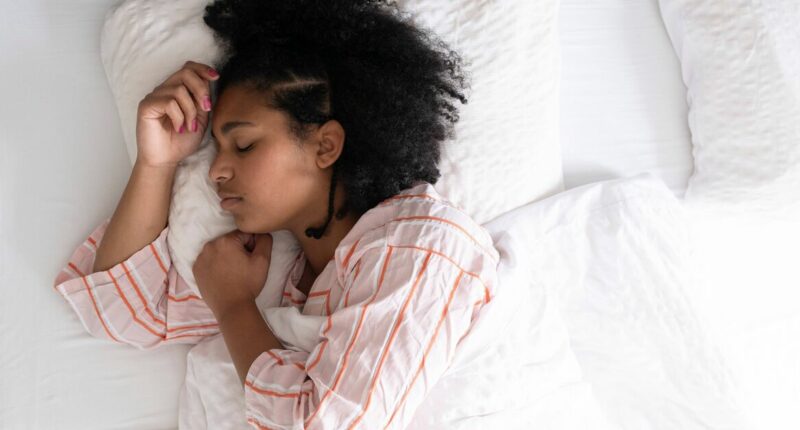Share this @internewscast.com
In the UK, insomnia affects roughly one in three individuals, making the quest for a restful night’s sleep a common struggle. It’s no wonder many are eager to explore any promising solution.
Recently, a novel method dubbed the ‘potato bed’ has been gaining traction across social media platforms. This intriguing approach involves turning a fitted sheet inside out, allowing its elastic edge to face upward. The edges are then stuffed with pillows, topped with a duvet, and finally covered with your usual bedding.
The result is a snug, cocoon-like sleeping arrangement reminiscent of a stuffed jacket potato. While it certainly looks inviting, the question remains—does it actually help with sleep?
Hannah Shore, who heads the Sleep Science division at Mattress Online, has weighed in on the trend, assessing both its potential upsides and drawbacks. Speaking on its benefits, she explained: “If you enjoy the sensation of being enveloped and kept toasty, you might find it easier to relax and drift off in a ‘potato bed.’”
The setup, with its abundance of cushions, creates a sensation similar to being embraced, which may replicate the comforting effect of weighted blankets. Shore elaborated: “The gentle pressure from the setup helps release feel-good hormones, promoting relaxation, happiness, and security—key elements for falling asleep.”
She further added: “The additional low amount of pressure releases feel-good hormones, which can leave you feeling relaxed, happy, and secure, the perfect combination to fall asleep.”
However, if you’re not someone who enjoys the sensation of being “cocooned”, such as having your sheets tucked in around you, you might not find it as comfortable.
Hannah explained: “With the addition of extra pillows and blankets, this may decrease the airflow, trapping extra warm air and making you feel warmer. When we sleep at night, our core body temperature needs to drop a couple of degrees in order to help us get access to the good quality sleep we need.
“Support may also be an issue. Your mattress and pillows are designed to be used in a specific way to provide you with the optimum support to help your body recover throughout the night. By piling extra cushions, duvets, and blankets around your body, you may find a lack of support, leading to increased morning aches and pains the following morning.”
Delivering her verdict, the sleep specialist said: “The potato bed is similar to a nest bed, having raised edges, lots of blankets, and providing that snuggly feeling. These types of beds are normally great for lounging in, but may not be the best option for a full night’s sleep.”
Instead, Hannah suggests trying a weighted blanket, which can replicate the sensation of pressure and warmth without compromising the body’s support or limiting airflow. She added: “These are filled with beads or sand and apply pressure all over your body. It should feel like someone is cuddling you, much like a potato bed.”
If you are experiencing insomnia and nothing appears to help, it’s always advisable to consult your GP.













